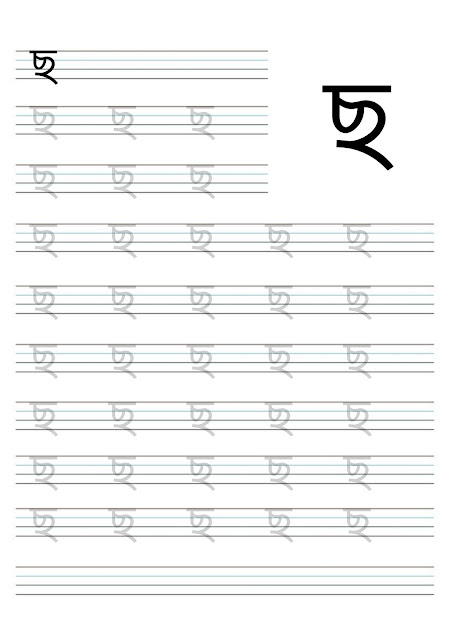Download Bengali Swarabarna worksheet
What the above PDF contains?
|
Vowels (স্বরবর্ণ) |
|
|
|
|
|
|
|
Bengali |
Romanization |
Pronunciation |
|
অ |
a |
/ɔ/ |
|
আ |
ā |
/a/ |
|
ই |
i |
/i/ |
|
ঈ |
ī |
/iː/ |
|
উ |
u |
/u/ |
|
ঊ |
ū |
/uː/ |
|
ঋ |
ṛi |
/ri/ |
|
এ |
e |
/e/ |
|
ঐ |
oi |
/oi/ |
|
ও |
o |
/o/ |
|
ঔ |
ou |
/ou/ |
|
|
|
|
|
Consonants (ব্যঞ্জনবর্ণ) |
|
|
|
|
|
|
|
Bengali |
Romanization |
Pronunciation |
|
ক |
k |
/k/ |
|
খ |
kh |
/kʰ/ |
|
গ |
g |
/ɡ/ |
|
ঘ |
gh |
/ɡʱ/ |
|
ঙ |
ṅ |
/ŋ/ |
|
চ |
c |
/tʃ/ |
|
ছ |
ch |
/tʃʰ/ |
|
জ |
j |
/dʒ/ |
|
ঝ |
jh |
/dʒʱ/ |
|
ঞ |
ñ |
/ɲ/ |
|
ট |
ṭ |
/ʈ/ |
|
ঠ |
ṭh |
/ʈʰ/ |
|
ড |
ḍ |
/ɖ/ |
|
ঢ |
ḍh |
/ɖʱ/ |
|
ণ |
ṇ |
/ɳ/ |
|
ত |
t |
/t̪/ |
|
থ |
th |
/t̪ʰ/ |
|
দ |
d |
/d̪/ |
|
ধ |
dh |
/d̪ʱ/ |
|
ন |
n |
/n/ |
|
প |
p |
/p/ |
|
ফ |
ph |
/pʰ/ |
|
ব |
b |
/b/ |
|
ভ |
bh |
/bʱ/ |
|
ম |
m |
/m/ |
|
য |
y |
/dʒ/ (archaic) |
|
র |
r |
/r/ |
|
ল |
l |
/l/ |
|
শ |
ś |
/ʃ/ |
|
ষ |
ṣ |
/ʂ/ |
|
স |
s |
/s/ |
|
হ |
h |
/ɦ/ |
|
|
|
|
|
Diacritics and
Conjuncts (সমাস ও যুক্তাক্ষর) |
|
|
|
|
|
|
|
Bengali script uses various diacritics and
conjuncts to represent different sounds and consonant clusters. Below are
some common diacritics: |
|
|
|
|
|
|
|
Bengali |
Romanization |
Usage |
|
া |
ā |
Long vowel marker |
|
ি |
i |
Short vowel marker |
|
ী |
ī |
Long vowel marker |
|
ু |
u |
Short vowel marker |
|
ূ |
ū |
Long vowel marker |
|
ৃ |
ṛ |
Vowel marker |
|
ে |
e |
Vowel marker |
|
ৈ |
ai |
Vowel marker |
|
ো |
o |
Vowel marker |
|
ৌ |
au |
Vowel marker |












































Thanks for helping baby , Please help with the rest.
ReplyDeleteThanks for visiting our site. Please do share it with your friends!
Deletecan you upload the rest letters plzz
ReplyDelete